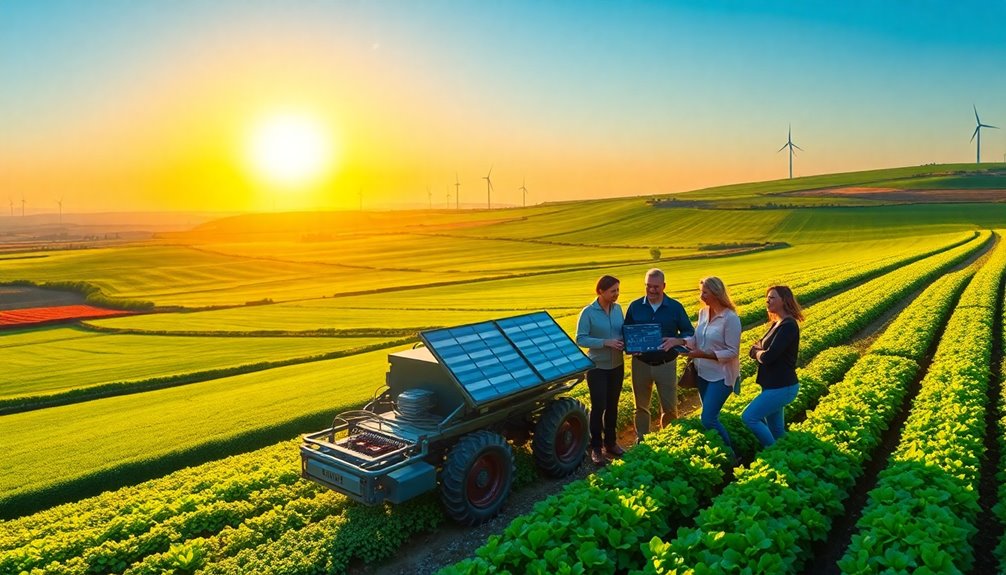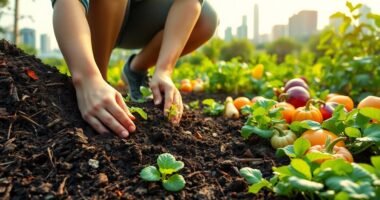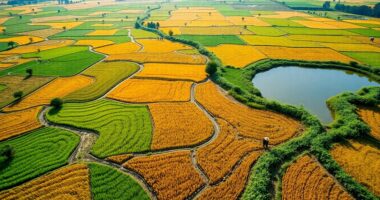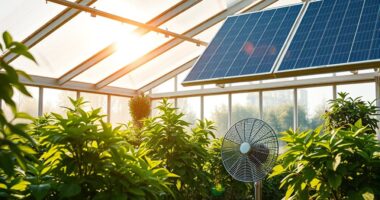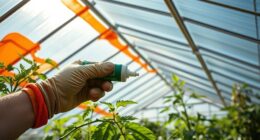If you're looking for new ideas to shape Europe's agricultural tomorrow, consider embracing sustainable practices that balance productivity and environmental health. By adopting innovative technologies like precision agriculture, supporting local supply chains, and enhancing biodiversity, you can help create a competitive and resilient agri-food system. Additionally, policies that reward eco-friendly approaches and promote consumer awareness can pave the way for a carbon-neutral future by 2040. Find out how you can get involved and make a difference.
Key Takeaways
- Emphasizing carbon-neutral agriculture by 2040 can drive innovation and attract investments in sustainable farming practices across Europe.
- Incorporating precision agriculture and smart farming technologies enhances productivity and reduces environmental impacts in modern agriculture.
- Strengthening trade relations and simplifying policies can bolster Europe's competitive edge in the global agri-food market.
- Engaging consumers in sustainability initiatives fosters a culture of environmental responsibility and supports local supply chains.
- Rewarding farmers for providing ecosystem services incentivizes the adoption of sustainable practices and enhances biodiversity.
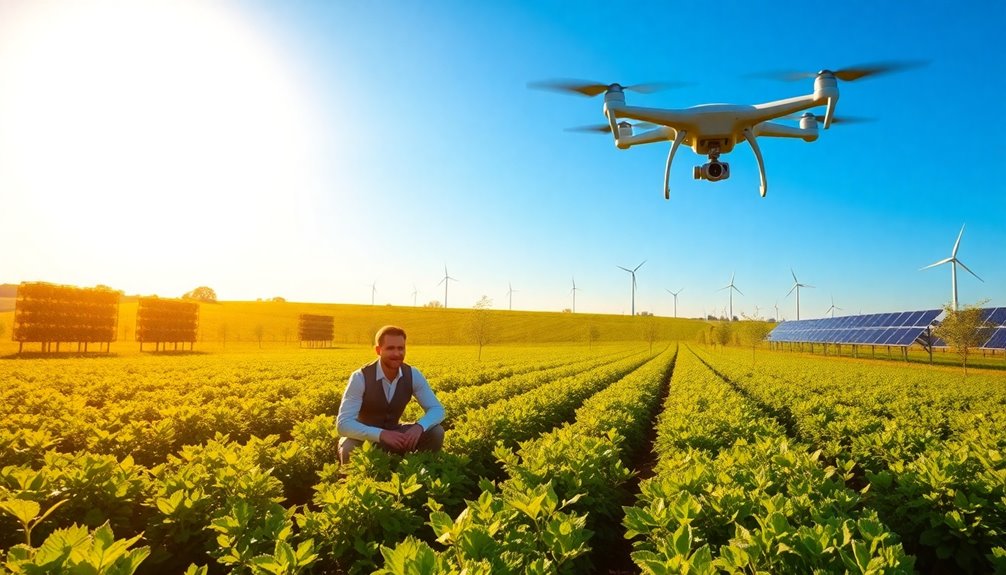
How can Europe reshape its agricultural landscape to meet the demands of a sustainable future? By embracing a new vision that prioritizes competitiveness, resilience, and fairness in the agri-food system, you can start to see real change.
The European Commission aims to support fair incomes for farmers while promoting transparency in the food supply chain. This approach not only strengthens farmers' positions but also rewards them for providing ecosystem services, paving the way for carbon-neutral agriculture by 2040. Additionally, adopting sustainable practices can significantly reduce harmful emissions associated with farming.
The European Commission is committed to fair farmer incomes and transparency, fostering ecosystem services for a carbon-neutral agriculture by 2040.
You'll find that sustainable farming practices are crucial in balancing food production with environmental sustainability. By adopting traditional methods like intercropping and incorporating nitrogen-fixing plants, you can enhance biodiversity and improve soil health.
Combining these ancient techniques with modern innovations, such as regenerative agriculture and carbon farming, offers a path to reduce agricultural carbon footprints.
Technological advancements are also essential. With the European Innovation Partnership (EIP-AGRI) backing over 3,000 projects, you can leverage precision agriculture and smart farming technologies to boost efficiency.
Events like the Commercial UAV Expo Europe showcase how drone technology can revolutionize precision farming. By participating in these innovations, you can stay ahead in an ever-evolving market.
As you look to the future, expanding trade relations and strengthening legal standards for imported food will help maintain Europe's global market leadership.
Simplifying the Common Agricultural Policy (CAP) will ease bureaucratic burdens, allowing you to focus on your agricultural practices. Establishing a bioeconomy strategy further supports the sector's development.
Moreover, enhancing biodiversity and ecosystem services is vital. By practicing regenerative agriculture and supporting local supply chains, you'll contribute to biodiversity and climate resilience.
As you raise consumer awareness about environmental impacts, you'll help create a culture of sustainability in agriculture.
Together, these new ideas can pave the way for a vibrant and sustainable agricultural future in Europe.
Frequently Asked Questions
What Are the Main Challenges Facing European Agriculture Today?
European agriculture faces several challenges today.
You're dealing with economic stability issues, fluctuating consumer demands for sustainability, and increased global competition.
Climate change impacts crop patterns and resource management, while regulatory burdens from policies like the Common Agricultural Policy complicate your operations.
Additionally, market instability and supply chain vulnerabilities threaten your profitability.
As the landscape shifts, adapting to these dynamics is crucial for maintaining a competitive edge in agriculture.
How Can Technology Improve Farming Practices in Europe?
Technology can significantly improve farming practices in Europe by enabling you to optimize resource use and enhance crop yields.
With precision farming, you can analyze data from sensors for better irrigation and fertilization. IoT devices allow real-time monitoring of operations, while automated machinery reduces labor needs.
AI tools predict weather patterns and detect crop diseases, helping you make proactive decisions.
What Role Do Consumers Play in Agricultural Innovation?
Imagine you're a farmer noticing an increase in demand for organic produce. Consumers like you're pushing for innovation by favoring sustainable farming methods.
Your preferences influence supply chains, encouraging practices that reduce environmental impact. As you adopt precision farming technologies, you're meeting these expectations while enhancing efficiency.
Ultimately, your choices drive agricultural advancements, showing how consumer demand not only shapes market trends but also inspires farmers to innovate and improve practices.
Are There Successful Examples of Sustainable Agriculture in Europe?
Yes, there are several successful examples of sustainable agriculture in Europe.
You can look at Grand Farm in Austria, which uses vermicomposting to enhance soil fertility.
In Finland, Palopuro Symbiosis integrates organic farming with biogas production.
The Netherlands' ERF emphasizes regenerative practices, while Farmonaut employs precision farming with satellite imagery.
Additionally, agroforestry combines trees and crops to boost biodiversity, showcasing effective and innovative approaches to sustainable farming across the continent.
How Does Climate Change Affect European Farming Strategies?
Climate change's impact on European farming strategies is significant.
You'll notice that crop yields, especially in southern regions, could plummet by up to 50% by 2050. This decline forces you to adapt by diversifying crops and improving irrigation methods.
Meanwhile, northern areas may see better conditions, creating a divide. Ultimately, you'll face economic losses and increased pressure to implement innovative practices, which require financial support and policy adjustments for effective adaptation.
Conclusion
As you explore innovative agricultural ideas, consider that Europe's farming sector employs over 10 million people, showcasing its vital role in the economy. By embracing sustainable practices and cutting-edge technology, you can help shape a more resilient future for agriculture. With the right strategies, you'll not only boost productivity but also contribute to environmental conservation. Let's cultivate a greener tomorrow together, ensuring that Europe remains at the forefront of agricultural excellence. Your involvement can make a real difference!
